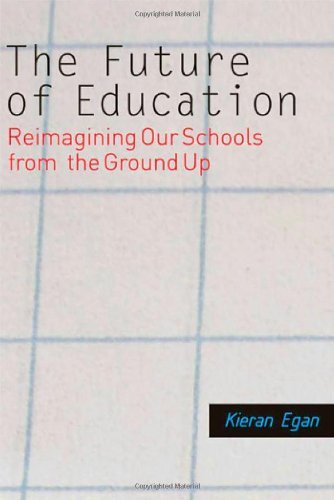The Future of Education: Reimagining Our Schools from the Ground Up by Kieran Egan Link to heading
Summary Link to heading
In “The Future of Education,” Kieran Egan critically examines the foundational aims of contemporary education—academic achievement, social development, and individual growth. He argues that these goals often conflict, leading to systemic inefficiencies. Egan proposes “Imaginative Education,” a transformative approach that leverages students’ natural curiosity and imagination to enhance learning experiences. :contentReference[oaicite:0]{index=0}
Chapters and Descriptions Link to heading
1. The Problem with Education Link to heading
Analyzes the inherent contradictions in current educational objectives and their impact on teaching effectiveness.
2. The Three Old Ideas Link to heading
Explores the traditional aims of education: academic knowledge, socialization, and individual development, highlighting their incompatibilities.
3. The New Idea Link to heading
Introduces “Imaginative Education,” emphasizing the role of imagination in learning and cognitive development.
4. The Tools of Imagination Link to heading
Discusses cognitive tools such as storytelling, metaphor, and humor, and their application in educational contexts.
5. The Five Kinds of Understanding Link to heading
Outlines the stages of understanding—somatic, mythic, romantic, philosophic, and ironic—and their relevance to curriculum design.
6. The Curriculum Link to heading
Proposes a restructured curriculum that integrates imaginative tools to foster deeper student engagement and comprehension.
7. Teaching Link to heading
Offers strategies for educators to implement imaginative methods, enhancing teaching effectiveness and student interest.
8. The School Link to heading
Envisions an educational environment that supports imaginative learning, including structural and cultural changes.
9. The Future of Education Link to heading
Reflects on the potential long-term benefits of adopting imaginative education practices for individuals and society.
Key Takeaways Link to heading
- Imagination as a Core Component: Incorporating imagination into education can resolve conflicts among traditional educational goals.
- Cognitive Tools: Utilizing storytelling, metaphor, and humor can make learning more engaging and effective.
- Developmental Stages: Recognizing different stages of understanding allows for tailored educational approaches.
- Curriculum Reform: A curriculum centered on imaginative education can better meet diverse student needs.
Review Link to heading
“The Future of Education” presents a thought-provoking critique of conventional educational systems and offers a compelling alternative through imaginative education. Egan’s insights challenge educators and policymakers to rethink teaching methodologies and curriculum design, aiming for a more holistic and engaging learning experience. :contentReference[oaicite:1]{index=1}
